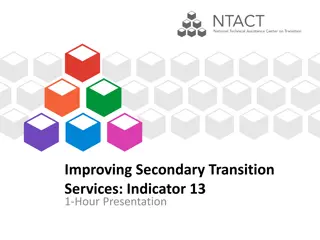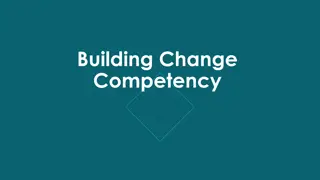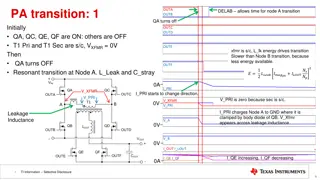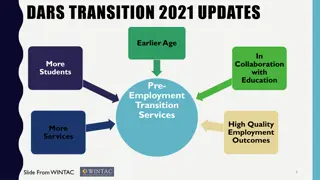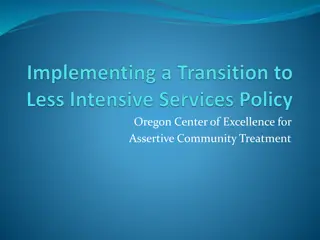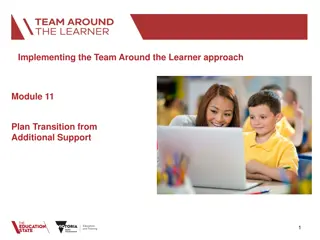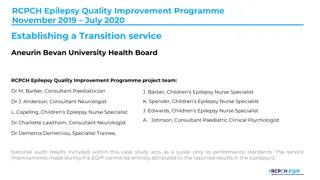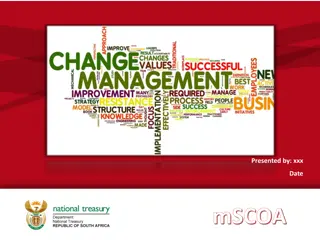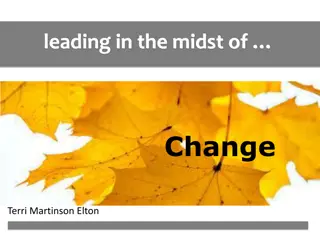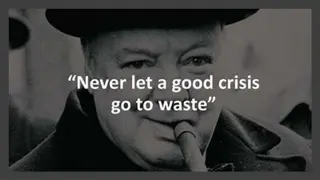Navigating Change: Understanding Transition Dynamics
Explore the nuances of change versus transition, common reactions, and losses associated with change. Discover how change is a process that involves adapting and managing individual reactions and uncertainties. Understand the dynamics of change, including the sense of loss and confusion that accompanies it.
Download Presentation

Please find below an Image/Link to download the presentation.
The content on the website is provided AS IS for your information and personal use only. It may not be sold, licensed, or shared on other websites without obtaining consent from the author. Download presentation by click this link. If you encounter any issues during the download, it is possible that the publisher has removed the file from their server.
E N D
Presentation Transcript
Leading Others Through Change
Agenda Overview of Change Change versus Transition Teams in Transition Approach to Change Summary
Change . . . Part of life Impossible to avoid Creates stress Involves both loss and growth Can be a crisis and an opportunity
Change versus Transition Change is situational and is external to us i.e. new job/boss, marriage, death of a loved one, divorce, birth of a child, downturn in economy, move to a new place, illness Transition is the process of adapting to the change
Think about the times youve moved How long did it take for you to move your stuff from point A to point B? How long did it take you to feel at home? Change is an event; Transition is a process
Common Reactions to Change Denial Resistance Isolation Sadness Detachment Anger Interpersonal conflicts Communication issues Insecurity Loss of Control Decreased motivation Wish for things to go back to how they were Reactions to change are individual and depend on a variety of factors, such as life experience, personal values, cultural background, gender influences, personality style, and stage of life
Dynamics of Change No matter how exciting or necessary the change . There is a sense of Loss No matter how skilled people are . There is a sense of Confusion and Uncertainty To varying degrees and at various stages . Expect Resistance No matter how carefully the change was implemented ... People will feel a loss of control
Losses Associated with Change Loss of the Known and Tried Loss of Control Loss of Structure Loss of Predictable/Comfortable Loss of Future Loss of Attachments Loss of Turf Loss of Meaning Loss of Future
Reflecting/Anticipating Changes Identify workplace changes that have occurred over the past year Staffing Roles/responsibilities Quantity of work Type/methods of work Technological changes Challenging events Celebrations/accomplishments What changes do you anticipate in the next 6 months?
Teams in Transition Just as each person has his/her own individual reaction to change, the team is going through a similar transition The four main stages of teams in transition are: Denial, Resistance, Exploration, and Commitment People on the team may be in different stages at the same time
Denial Employees attempt to deny or minimize the impact of the change Signs of denial may include people avoiding the topic, going through the motions, pretending nothing is happening You may hear: They don t really mean it They ll go back to the old way It s no big deal; everything will be fine
Resistance Denial is often followed by a period of resistance, when things seem to get worse, and people may feel increasingly apprehensive and irritated Signs of Resistance may include mistakes, careless work, anger, low energy, distraction You may hear: They can t do this to me! It isn t fair! This should never have happened. I m afraid I won t be able to do this
Exploration People begin to shift to a more positive, optimistic phase and feel more confident that they will survive the change. They feel more motivated to explore new possibilities Signs of Exploration may include confusion, increased training, trying new things You may hear I ve got an idea to try. Maybe this will work out after all. This works better than the old way.
Commitment In this final stage, a new sense of cohesion starts to emerge. People are ready to work together to create new stability. There is a sense of pride in having mastered the challenge Signs of Commitment may include independent decision making, cooperation and improved teamwork You may hear: We ve come a long way. How can we work together on this? We re going to be the best team around.
What employees need in each stage
Helping Employees Through Change Provide information Communicate, communicate, communicate! Explain how the change fits into the overall mission Ask for questions, concerns, feelings, opinions Resist becoming defensive Be visible and involved Look for opportunities for employee input Recognize individual differences Be patient!
What to Avoid Autocratic behavior Avoiding employees Dismissing other s concerns Rah! Rah! Jumping ahead too quickly Assuming others will react the same way you do to change Ignoring your own needs Going it alone
As you face changes in your life Look at what s ending and acknowledge your losses Understand and try to accept that there will be periods of uncertainty and heightened emotion Look to your experience in dealing with change in the past to help deal with present changes Adopt the attitudes and behaviors that can help you move forward in a positive direction Identify what you can control and what you cannot Choose to take action on the things you can, and let go of the things you can t
Remember. . . Smooth seas do not make skillful sailors. ~African Proverb



